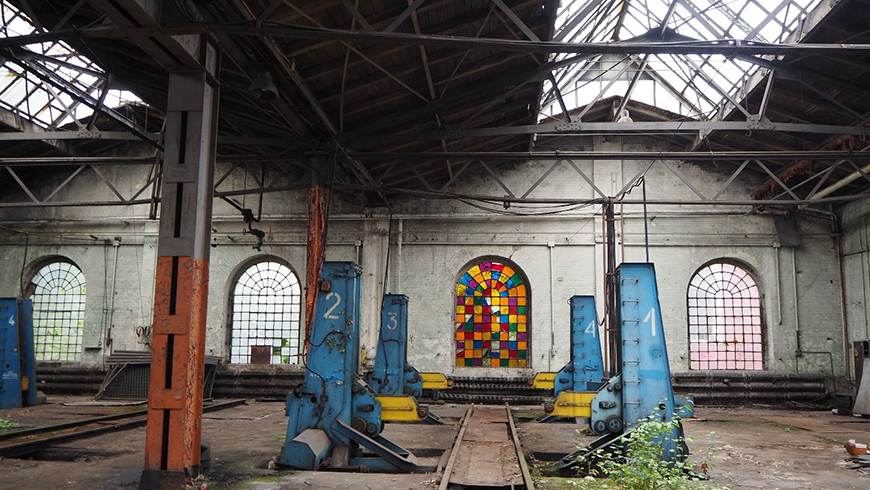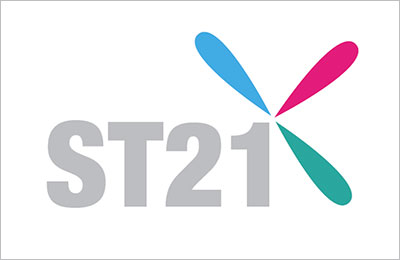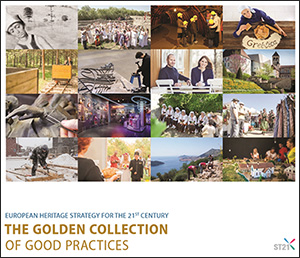Location of the initiative:

20 cities: Chorzów, Dabrowa Górnicza, Dobiegniew, Ełk, Grajewo, Hrubieszów, Konin, Leszno, Lublin, Milicz, Opole Lubelskie, Rybnik, Słupsk, Stalowa Wola, Starachowice, Szczecin, Warszawa, Włocławek, Wrocław, Żyrardów (konkurs Modelowa Rewitalizacja Miast / Model Urban Revitalization) + 3 cities: Bytom, Łódź, Wałbrzych (projekty pilotażowe w zakresie rewitalizacji/ pilot projects in revitalization)
Relation to Strategy 21 Recommendations:
S5 - Encourage and assess citizen participation practices and procedures
Time span of the initiative:
23.04.2015 – 31.12.2019
Motivation / Methodology
In 2015 the new approach to revitalization in Poland gained the legal basis of action (act on revitalization from 9 Oct 2015, guidelines for revitalization I operational programs for 2014-2020). Revitalisation was identified as a “process of leading out a degraded area from a crisis situation through comprehensive activities (including social and economic or spatial-functional, or technical, or environmental issues), integrating intervention for the local community, space and local economy, territorially concentrated and conducted in a planned manner, and integrated through revitalization programs” (Act on revitalization, 2015).
The revitalisation now is based on local/municipal revitalization programs with specific structure. Revitalization program refers to revitalization areas (areas of concentration of crisis situation, comprising no more than 20% of city area and 30% of population, it is often a city centre) delimitated on local evaluation. The revitalization program is a coordination tool with a vision of the future, adjusted activities and financial sources.
The Key principles of revitalisation are, among others, an inclusive character of revitalization with wide stakeholder participation, and spatial and environmental care.
The Revitalisation Committee is a special collaboration tool created to help organize social participation and good governance in revitalisation. The Revitalisation Committee is a forum for cooperation and dialogue of stakeholders with municipal bodies on issues related to preparation, delivery and evaluation of revitalisation and provides opinions and advice to the head of the municipality, mayor or president.
Special Revitalization Zones define special regulations regarding spatial planning established in the revitalization area. It can enable the designation of the modernisation of buildings in the city centre, easier public procurement procedures or a social housing as public aims.
To help cities and municipalities implement new regulations to revitalization and create or find best practices to share, the Ministry of Investment and Economic Development developed a support mechanism for cities and municipalities. The package of activities contains:
· grants for preparation the revitalization programs,
· contest Model Urban Revitalization,
· pilot projects in revitalization,
· Knowledge Centre about Revitalization.
Thanks to the package, more than 1400 municipalities in Poland (55% of all) have revitalisation programs and take actions to make degraded areas a better place to live.
The Model Urban Revitalisation – the contest was addressed to municipalities with city status and is all about developing models for revitalization activities. The idea is simple: solutions are developed to serve as a model for others. In a two-stage competition, out of almost 250 applications, 20 best projects were selected. The selected cities are to develop a model for conducting revitalization in one of nine areas. Topics of pilot actions are: social policy, public participation, housing, shaping of space, environmental protection, protection of heritage, stimulation of the economy, urban mobility, financing of revitalisation. Three more cities: Bytom, Łódź, Wałbrzych, which need large-scale revitalization activities, were supported by the Ministry to conduct the pilot projects. This form of support is tailored for the needs of each of them. The most important thing is proper preparation of staff at municipal offices for the challenges they will face. It is also essential to skilfully coordinate the revitalization process and delegate the responsibility for revitalization to a high decision-making level (e.g. Plenipotentiary for Revitalization, or the Deputy Mayor in charge of task coordination). Revitalization activities are frequently bespoke tasks, which is why it is necessary to improve the institutional capacity of cities and municipalities (for instance as part of projects). It is also vital to utilize employee potential and dedication.
Pilot actions are: public participation, housing policy, shaping of space and revitalization management. For implementation of the pilot projects cities, the grant was given and additionally support by experts.
The platform to share best practice is known as Knowledge Centre about Revitalization (www.rewitalizacja.gov.pl). It’s a place where you can find information about each of 23 projects, publications, statistics and instructions to revitalizations tools.
Obstacles / Barriers
The first challenge is posed by differences between revitalization challenges faced by large and small settlements – Revitalization in cities and large towns differs from revitalization of small towns and villages in many aspects, from spatial structure through to the degree of internal differentiation to the number of officials or active social organizations. At the stage of creating a new formal framework for revitalization activities, a conscious decision was made not to introduce thresholds or barriers which would disadvantage municipalities with respect to revitalization requirements depending on their size or nature. In the case of smaller settlements, the current regulations present challenges which are not always easy to meet. The experience gained indicates that it is a good idea to specify the rationale and conditions of revitalization in smaller municipalities.
Finance for revitalization – it is hoped that EU funds can be used to finance revitalization. The expectations and needs with regard to revitalization continue to increase, which is why it is necessary to actively seek various sources of finance, and to create and promote new mechanisms. It might also prove necessary to analyse the way finance is used in revitalization activities and draw conclusions towards even greater concentration of funds, separation of sources and the principles of finance for revitalization and renewal of villages, special treatment for towns with the smallest populations and the smallest investment budgets. Otherwise, in many towns and cities, revitalization will not be associated with positive social changes, but rather with dashed hopes.
Cooperation with various partners – different partners require different approaches in order to feel encouraged to cooperate. It is necessary to actively encourage the institutions and persons facing challenges in the scope of problem identification, as well as revitalization projects.
Innovative approach – revitalization constitutes a key vehicle for innovative action and promotes it. This applies to the currently popular social innovations (social integration clubs, social integration centres, special cooperatives, projects related to resident self-help, etc.) and innovation with regard to planning and transforming cities and towns (space prototyping, inclusion of residents in discussion on transformations, testing new solutions such as woonerfs, etc.). It is important that the self-governments should not fear adopting such mechanisms due to the risk of financial and organizational complications.
Change / Impact
Change in approach to revitalization activities in towns and cities – from seeing revitalization as renovation of facilities to management of a given revitalization area with regard to the needs and potential of its residents, the history and identity of the area, integration of various municipal policies.
1. Greater involvement of residents in the activities – one of the activities under the projects consisted in implementation of the so-called microgrants, i.e. supporting small initiatives submitted by the residents with regard to their immediate surroundings – e.g. development of the yard. The purpose of these small projects is to initiate revitalization, animate, demonstrate the efficiency of joint or bottom-up action which cost little but have a great impact on the community. A proper revitalization process should be based on dialogue with the local community – however, in order for the dialogue to be effective, it is imperative to start with the basics, i.e. strengthening of the social competences of the participants. In Dąbrowa Górnicza, educational activities were aimed particularly at three groups: school children (school/youth package), senior citizens (senior package) and key agents for revitalization.
2. There has been an introduction of educational activities to schools in order to teach people to care about the space in which they live from an early age, starting with the understanding of that space and its historical and cultural context. One example is development of the regional education program aiding the process of revitalization in Rybnik through building up social capital. An understanding of the local identity of areas to be transformed is intended to preserve their authenticity.
3. Development of the local economy based on high quality of offered goods and services, including craftsmanship, traditional professions and creative professions. For instance, the authorities of Lublin have adopted a strategy which dictates that the revitalization area will eventually be transformed into the Creative District of Lublin. It is supposed to be a space which will attract both individuals associated with art and culture and enterprises from creative industries. The concept also envisions support for disappearing professions and promotion of this area as a place where you can use services of craftspeople. For creative enterprises, the presence of similar types of businesses in a given area as well as interesting initiatives which will attract potential recipients of services are extremely important factors. For this reason, the city prepared an offer regarding rental of commercial space for preferred groups of lessees.
Lessons learned
The practice of revitalization shows that the demand for information, educational and promotional activities is still high. The interest of municipalities in the new approach to revitalization shows no signs of faltering, which is why there is still room for development and expansion of information and educational activities through initiatives such as the Knowledge Centre about Revitalization and local knowledge centres, instruments for support and exchange of practices (pilot and model action, networks for cooperation and exchange of knowledge). One challenge is to successfully promote the best revitalization trends outside the relatively small group of cities and towns which are leaders in revitalization, so that they effectively reach the ones that have so far demonstrated a “modest” approach to revitalization.
In order to pursue successful activities, it is necessary to ensure that all participants in the activities have the same level of knowledge. This also applies to activities dedicated to representatives of the 23 cities which are implementing their projects (activities implemented in cooperation with the National Heritage Board of Poland in the scope of supporting municipalities in revitalization processes concerning the role of cultural heritage in revitalization, which comprise workshops, a conference, a study visits and a publication, are a good example http://www.funduszeeuropejskie.gov.pl/strony/o-funduszach/rewitalizacja/modelowe-dzialania-pilotazowe/ochrona-dziedzictwa/).
Another example is action taken by cities that targets various groups of residents and is aimed at strengthening social competences. “Understand in order to act” is the motto of educational activities in the process of revitalization.
In the process of evaluating revitalization programs, actors at the regional level (marshal offices) played an important role, thereby creating a network of cooperation with persons who carry out revitalization in municipalities. Individuals who verify revitalization programs not only have extensive knowledge, but frequently also exhibit great enthusiasm and dedication. This potential should be used to provide further support to municipalities (in the scope of information and education), as well as in programming expenditure from EU funds for revitalization purposes.
Greater effectiveness of action can be assured by involving multiple partners. While the municipal authorities initiate the revitalization process, success requires the involvement of multiple entities and combination of potentials, competences and resources.
The activities should be carried out based on a good diagnosis of needs and potentials. However, not everything can be planned, so it is essential to be flexible and have the courage to make non-standard and innovative decisions.
Online resources
- Krajowe Centrum Wiedzy o Rewitalizacji / Knowledge Center about Revitalization www.rewitalizacja.gov.pl
Contact information
Aleksandra Kułaczkowska
Ministry of Development Funds and Regional Policy
Department of Assistance Programmes
[email protected]
Source of financing
Public financing
Financing details
Model Urban Revitalization: projects value – 48,5 mln PLN, 43,7 mln PLN in grants from European funds.
Pilot projects in revitalization: projects value and value of grants – 14,5 mln PLN grants from European funds.
Grants for preparation of the revitalization programs: projects value – 61,3 mln PLN, 54,9 mln PLN in grants from European funds.
Summary: projects value – 124,3 mln PLN, 113,1 mln PLN in grants from European funds.
(co-finance from the Technical Assistance Operational Programme 2014-2020)





